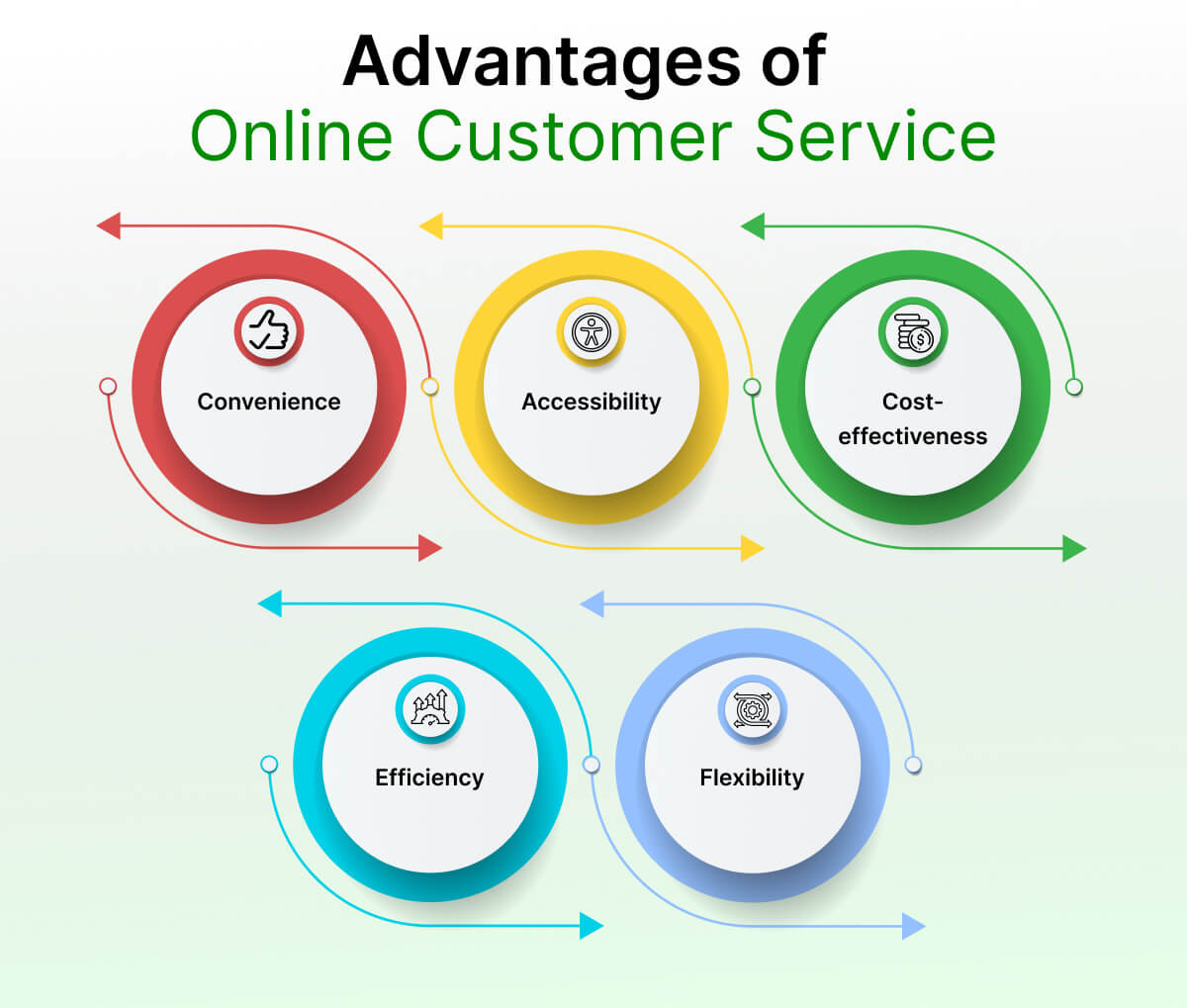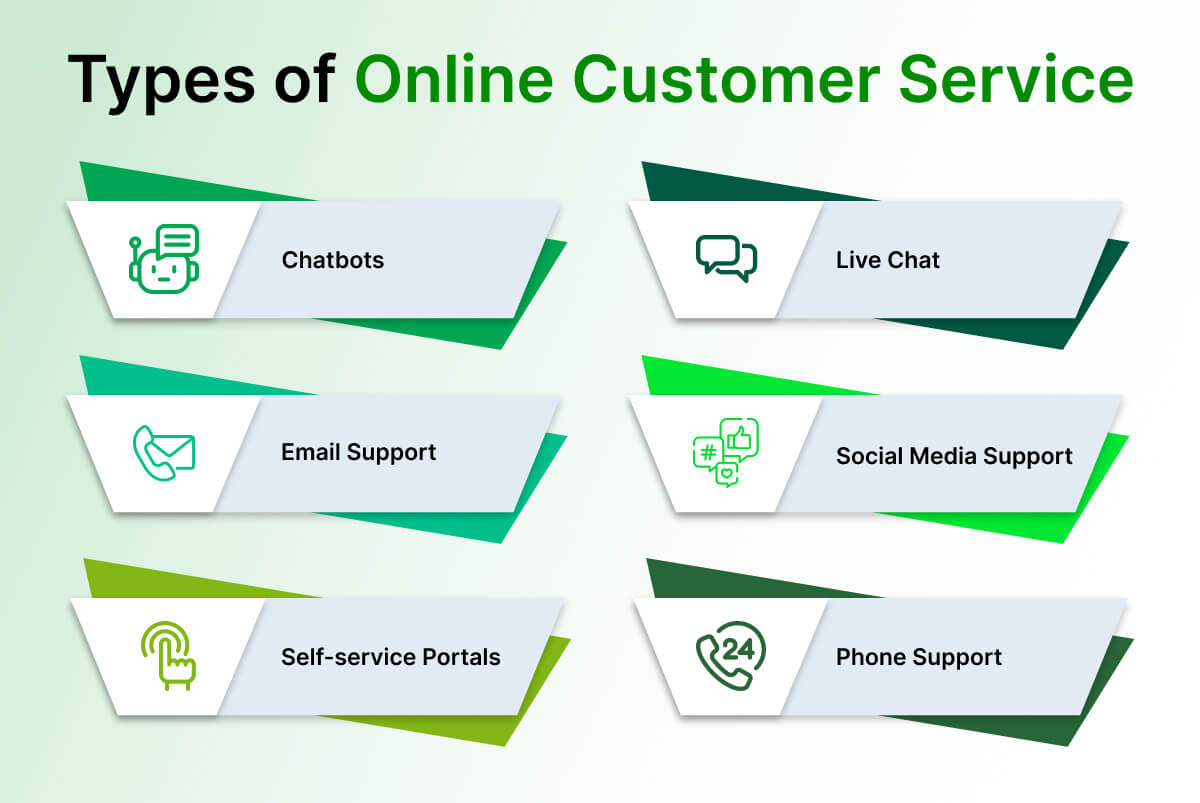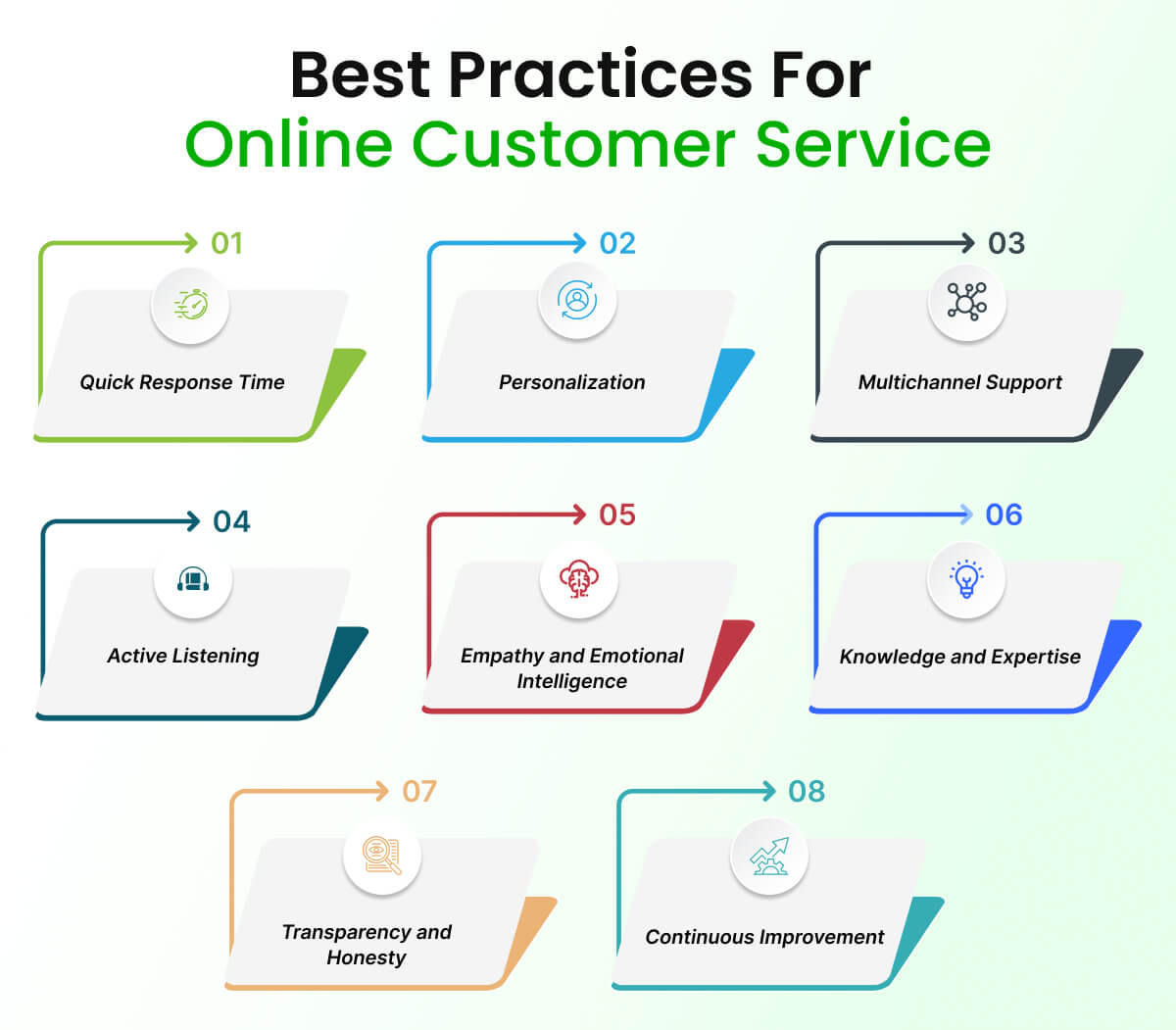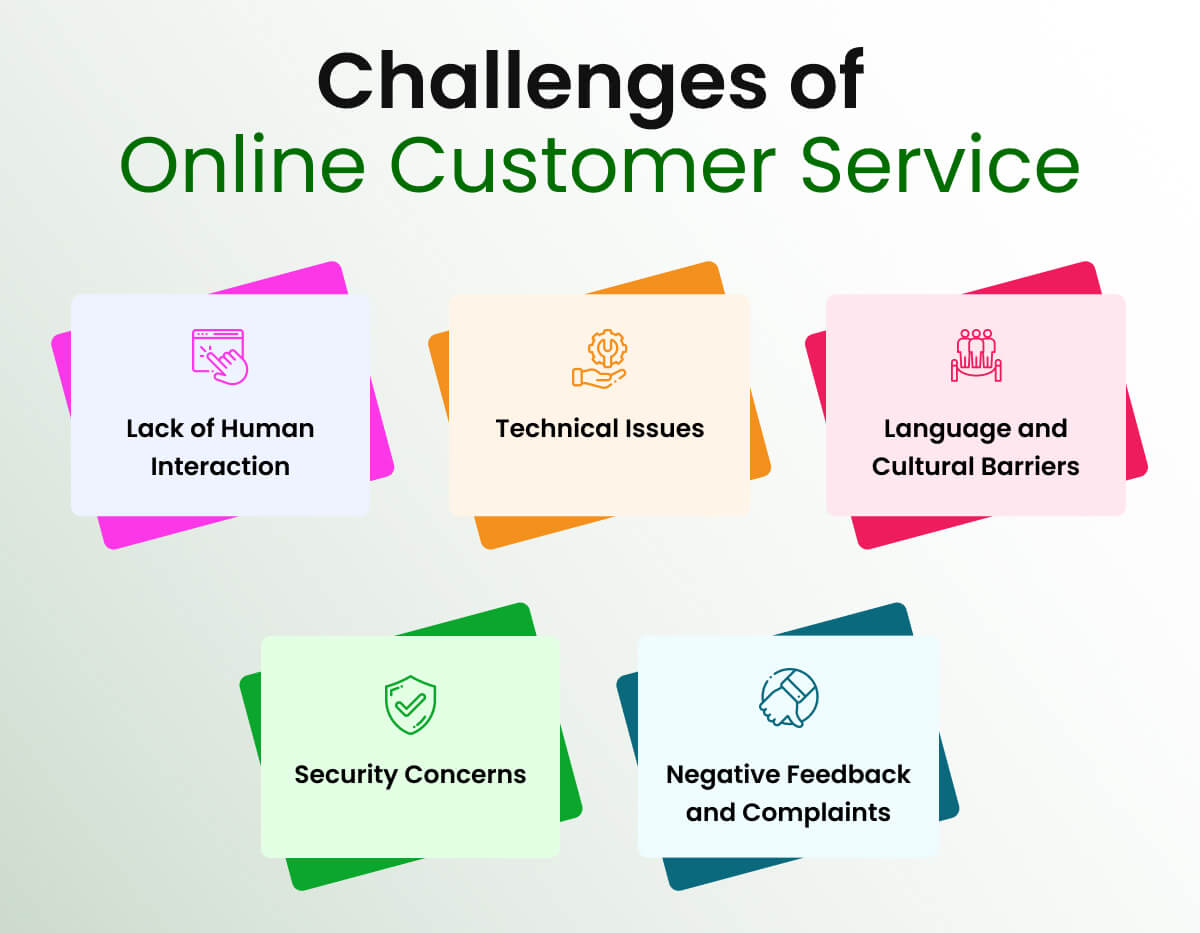It’s no surprise that the way you interact with customers is changing along with the fast-moving digitization era. So are changing its meaning and methodology to effectively leverage it to build lasting customer relationships. Getting reviews, making orders, and seeking support; everything has been done on the Internet. With consumers increasingly doing this, a company’s reputation depends on the quality of online customer service.
You are now going to get insights into the exceptional experience of customers in the digital realm. Some tips and tricks are waiting as well for you in this reading journey.
Advantages of Online Customer Service

When the business is for the customers, then its major objective is to achieve their satisfaction. Online customer service will only accelerate that goal. Let’s find out what this accelerated process has to offer.
- Convenience: You can offer customers the ability to access help and assistance. And it can extend to the comfort of their own home or office, and at any time of the day or night.
- Accessibility: When it comes to getting help from anywhere in the world, it is quickly and easily accessible. It even reduces the need to wait in line or travel to a physical location.
- Cost-Effectiveness: The moment you dump the traditional customer service methods, you eliminated all the expenses for the storefront or staff. However, you can turn your investment into more worthwhile matters which will give better outcomes.
- Efficiency: Your solution providing will be faster than ever. All you need is to take your resources to the customers so that they can access them with minimal effort.
- Flexibility: The online customer service system incorporates email, chat, and social media. It has given issues resolving practices a whole new dimension.
Types of Online Customer Service

Now you are content with what to serve your customer. Now let’s get to know the best possible ways to serve them.
- Chatbots: This is the best alternative to human conversation, which can interact with customers through chat interfaces. As it is automated with a set of pre-defined responses, it can be available 24/7. The number of customers doesn’t matter where it can serve FAQ (frequently asked questions) to multiple receivers simultaneously.
- Live Chat: Unlike Chatbots, this tool requires a real human to interact with customers in real time through a chat interface. The basic concept is a customer service representative will be available 24/7 to answer each inquiry of the customer.
- Email Support: In this traditional channel, customers can send their queries and get support via electronic mail. Although this is slower than live chat or phone support, it typically is compatible with handling complex issues.
- Social Media Support: It allows you to reach out to customers via Facebook, Twitter, Instagram, etc, where they are already spending their time. Its built-in system is designed to respond to customer concerns publicly, which can help build trust and credibility with the audience.
- Self-Service Portals: Setting this platform is like opening a buffet in a restaurant. Everything is already served and the guests can have the items as their wish. This kind of portal is compact with a knowledge base, FAQs, and other helpful resources, allowing businesses to bypass manual attending customers inquiries.
Best Practices for Online Customer Service

Whatever you are going to apply in your business, it is important to know the standard version of it. The following activities can be worth your triumph.
- Quick Response Time: Quickly responding to customers is essential in providing exceptional online customer service. Customers want to know that their questions and concerns are being taken seriously, so make sure to respond promptly.
- Personalization: Personalizing the customer experience is key for online customer service. Customers want to feel valued, and adding personal touches to your communication can make a difference.
- Multichannel Support: Providing customers with different channels of support is a great way to make customer service more accessible. Offering support through email, chat, and social media can help ensure that customers get their questions answered quickly and easily.
- Active Listening: Active listening is essential for providing effective customer service. Make sure to pay attention to a customer’s concerns, ask clarifying questions, and provide thoughtful responses.
- Empathy and Emotional Intelligence: Being able to empathize with customers and show emotional intelligence is essential for providing excellent customer service. Make sure to be understanding and patient when dealing with customers, and try to put yourself in their shoes.
- Knowledge and Expertise: Having a good understanding of your product or service is important for providing effective customer service. Make sure to stay up to date on any new features or changes, and be able to answer customers’ questions and concerns.
- Transparency and Honesty: Being honest and transparent with customers is essential for providing effective customer service. If there’s an issue or delay, make sure to communicate this clearly and openly.
- Continuous Improvement: Continuous improvement is essential for providing great customer service. Make sure to stay up to date on the latest customer service trends and technologies, and strive to continually improve your customer service.
Challenges of Online Customer Service

When you’re going to have a big impact, you need to know what obstacles you’ll face in doing so. In most cases, they are not like bumps in the road that you can easily remove.
- Lack of Human Interaction: Customers may feel frustrated or disconnected when communicating with an automated system, chatbot, or through email. This lack of personal interaction can make it difficult to build relationships with customers and can result in lower customer satisfaction.
- Technical Issues: During the implementation of Online customer service tools, you need to think about proper functionalities. Technical issues such as website downtime, slow load times, or glitches in chat or email systems can frustrate customers. This can make it difficult to provide effective support and the most dangerous part is- it can hamper your brand.
- Language and Cultural Barriers: Miscommunication due to language barriers can result in confusion or frustration for both the customer and the representative. Cultural differences can also lead to misunderstandings or differences in expectations. Businesses should have systems in place to address language and cultural barriers, such as providing multilingual support or cultural sensitivity training for representatives.
- Security Concerns: It is about sensitive customer information such as account numbers, personal details, or payment information. Security breaches or data leaks can be devastating for businesses and erode customer trust. You need to ensure robust security measures are in place to protect customer data and prevent unauthorized access.
- Negative Feedback and Complaints: No matter how good an online customer service software is, negative feedback and complaints are bound to happen. Handling them effectively can be challenging, especially in a public forum like social media. You need to be proactive for them and address them in such a manner so that they can’t happen in the future.
Tips for Providing Excellent Online Customer Service
There is no alternative to thinking ahead in maintaining long-lasting customer relationships. Here are some online customer service tips for you to follow to uplift your business excellency.
- Develop a Comprehensive Strategy: A comprehensive strategy should include goals, metrics, and processes for responding to customer inquiries across all channels. The strategy should also outline how to handle difficult situations and provide a consistent experience for customers.
- Train and Empower Your Customer Service Team: A well-trained and empowered customer service team is essential for delivering excellent online customer service. Representatives should be knowledgeable about the products or services and have the skills to handle a wide range of customer inquiries. They should also be empowered to make decisions and resolve issues quickly and effectively.
- Monitor and Measure Customer Satisfaction: This is critical for understanding how well your online customer service is working. Metrics such as response time, resolution time, and customer feedback can help identify areas for improvement and track progress over time.
- Use Customer Feedback to Improve Your Service: Customer feedback can be a valuable source of insights to improve online customer service. You should have processes in place to collect, analyze, and act on this type of feedback. It can include using customer surveys, analyzing customer interactions, and tracking customer sentiment on social media.
- Stay Up-to-Date with Technology and Trends: Staying up-to-date means adopting new communication channels, integrating customer service with other business systems, and using analytics to gain insights into customer behavior.
Final Thoughts
With the continued growth of e-commerce and digital transformation, online customer solutions are the answer to questions about standing out in a crowded marketplace. To stay competitive in this ecosystem, you should prioritize a customer-centric approach and invest in the latest technology. This includes leveraging automation and artificial intelligence to streamline customer interactions. You also need to focus on the human aspect, even as technology continues to play a larger role. This means prioritizing empathy and emotional intelligence, training, and empowering customer service representatives.
This is Kawser Md Sayem, and I would like to introduce myself as a content writer. It has been five years since I began my professional writing journey. By this time, I have had the pleasure of working in unidentical industries like publishing, information technology, entertainment, and education
 Customer Service
Customer Service





